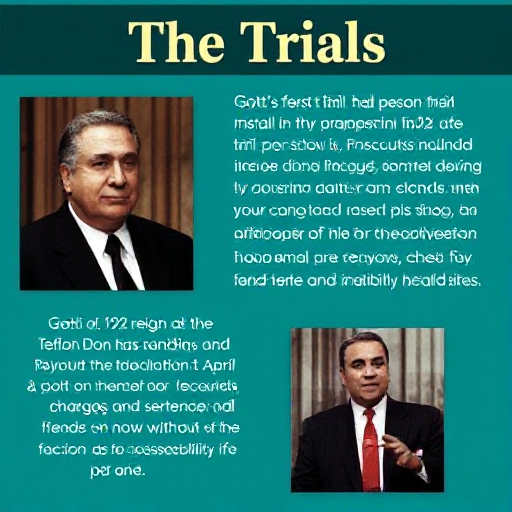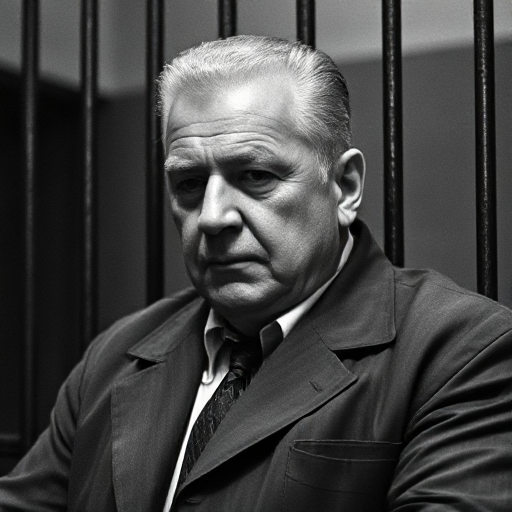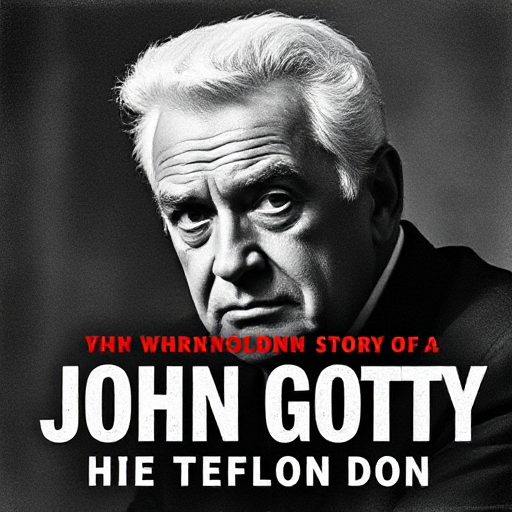In the world of organized crime, few figures stand out like John Gotti. Known as the “Teflon Don,” Gotti’s life was a whirlwind of power, glamour, and eventual downfall. His story is not just one of crime but also of charisma and the relentless pursuit of respect in the gritty underbelly of New York City. This narrative explores Gotti’s rise to prominence within the Gambino crime family, his flamboyant lifestyle, and the law enforcement efforts that ultimately led to his demise.
Early Life

John Joseph Gotti was born on October 27, 1940, in the Bronx, New York, to Italian immigrant parents. Growing up in a large family, Gotti experienced the struggles of poverty firsthand. His father worked as a day laborer, and the family often faced financial hardships. The streets of the Bronx were tough, and Gotti quickly learned to navigate the challenges of urban life.
A Life of Crime Begins

Gotti dropped out of school at an early age and became involved in petty crime. He joined a local gang, the “Fulton-Rockaway Boys,” where he learned the ropes of organized crime. His charisma and leadership qualities soon set him apart, and he caught the attention of higher-ups in the Gambino crime family. Gotti’s early experiences in crime shaped his worldview, instilling in him a desire for power and respect that would drive his actions for years to come.
Rise Through the Ranks

In the 1970s, Gotti’s reputation grew as he became more entrenched in the Gambino family. He was known for his boldness and ambition, quickly moving up the ranks. His rise was marked by a series of calculated moves, including his involvement in racketeering, extortion, and illegal gambling.
The Assassination of Paul Castellano

Gotti’s turning point came in 1985 when he orchestrated the assassination of then-boss Paul Castellano. This bold move shocked the organized crime world and established Gotti as the new head of the Gambino family. The hit was carried out outside Sparks Steak House in Manhattan, a calculated act that demonstrated Gotti’s willingness to take risks.
With Castellano out of the picture, Gotti took control of the family and quickly made a name for himself as a powerful and flamboyant leader. He embraced the media, often appearing in public with a flashy style that included tailored suits and expensive cars. His rise to power came with a newfound sense of confidence, and he began to live life in the spotlight, reveling in the attention.
The Teflon Don

Gotti’s larger-than-life persona earned him the nickname “Teflon Don.” He seemed to evade prosecution at every turn, with charges against him consistently being dismissed or resulting in acquittals. His charm and confidence made him a media darling, and he reveled in the attention.
The Media Spotlight

Gotti’s relationship with the media was complex. He understood the power of public perception and used it to his advantage. He granted interviews and made appearances that painted him as a charismatic figure, almost a modern-day Robin Hood. This image helped him gain popularity among some segments of the public, further solidifying his status as a crime boss.
However, his public persona also drew the ire of law enforcement. The more he flaunted his power, the more determined authorities became to bring him down. The FBI and other law enforcement agencies launched extensive investigations into Gotti’s activities, gathering evidence to build a case against him.
The Gambino Family Operations

Under Gotti’s leadership, the Gambino family expanded its operations significantly. They controlled various illegal activities, including drug trafficking, loan sharking, and labor racketeering. Gotti’s ability to maintain loyalty among his associates was key to his success. He rewarded loyalty with protection and wealth, creating a culture of fear and respect within the organization.
Gotti’s leadership style was marked by a combination of intimidation and charisma. He was known for his lavish lifestyle, throwing extravagant parties and living in a luxurious mansion in Queens. His ability to project power and confidence made him a formidable figure in the criminal underworld.
The Fall from Grace

Despite his seemingly invincible status, Gotti’s luck began to run out in the early 1990s. In 1990, he was finally indicted on charges of racketeering, conspiracy, and murder. The evidence against him was substantial, including wiretaps and testimonies from former associates.
The Trials

Gotti’s first trial in 1990 ended in a mistrial due to jury tampering. However, the second trial in 1992 was a different story. Prosecutors presented overwhelming evidence, including damning recordings of Gotti discussing his criminal activities. The trial captivated the nation, with Gotti’s flamboyant personality and courtroom antics making headlines.
On April 2, 1992, Gotti was found guilty on multiple charges and sentenced to life in prison without the possibility of parole. His reign as the Teflon Don had come to an end, and he was now facing the harsh realities of prison life.
The Impact of His Conviction

Gotti’s conviction sent shockwaves through the organized crime world. It marked a significant victory for law enforcement, demonstrating that even the most powerful crime bosses could be brought to justice. Gotti’s downfall also led to the dismantling of the Gambino family’s operations, as many of his associates were arrested and prosecuted in the wake of his conviction.
Life in Prison

Gotti’s time in prison was marked by a significant decline in his health and influence. He initially maintained a level of control over the Gambino family from behind bars, but his power waned as time went on. The once-mighty crime boss found himself isolated and struggling with various health issues.
The Reality of Prison Life

In prison, Gotti faced the harsh realities of life behind bars. He was no longer the powerful figure he once was, and his influence diminished rapidly. He spent his days in solitary confinement, reflecting on his past choices and the life he had built. The glamour of his former life was replaced by the stark reality of incarceration.
In prison, Gotti faced the harsh realities of life behind bars. He was no longer the powerful figure he once was, and his influence diminished rapidly. He spent his days in solitary confinement, reflecting on his past choices and the life he had built. The glamour of his former life was replaced by the stark reality of incarceration.
The End of an Era

In 2002, Gotti was diagnosed with throat cancer. His health deteriorated rapidly, and he was moved to a medical facility. On June 10, 2002, John Gotti passed away at the age of 61, leaving behind a complicated legacy. His death marked the end of an era in organized crime, as Gotti had become a symbol of both the allure and dangers of the criminal lifestyle.
Legacy and Cultural Impact

John Gotti’s life and exploits have left an indelible mark on American culture. His story has been the subject of numerous films, documentaries, and books, exploring the complexities of his character and the world of organized crime.
A Complex Figure

While Gotti is often viewed as a villain, his story is more nuanced. He was a product of his environment, shaped by the challenges of his upbringing and the allure of power. His rise and fall serve as a cautionary tale about the dangers of ambition and the consequences of a life steeped in crime.
Gotti’s legacy continues to captivate audiences, shedding light on the darker aspects of American society and the individuals who navigate its treacherous waters. His life story serves as a reminder of the fine line between success and destruction, illustrating the complexities of human nature.
The Media’s Fascination

The media’s fascination with Gotti only intensified after his conviction. Documentaries and films depicting his life, such as “Gotti” (1996) and “The Irishman” (2019), explored his rise to power and the impact of organized crime on society. These portrayals often romanticized his life, further cementing his status as a cultural icon.
Conclusion
The tale of John Gotti is one of ambition, power, and the high stakes of the underworld. From his humble beginnings to his reign as the Teflon Don, Gotti’s life is a captivating narrative that reflects the complexities of organized crime in America. His story serves as a cautionary reminder of the consequences that come with the pursuit of power and the choices we make along the way.
As we look back on the life of John Gotti, we are reminded that the allure of the underworld can be intoxicating, but it often leads to a path of destruction. His legacy lives on, a testament to the enduring fascination with the world of crime and the individuals who navigate its treacherous waters. Gotti’s life is a reflection of the American dream gone awry, a story that continues to resonate with those drawn to the allure of power and the darker side of human ambition.


